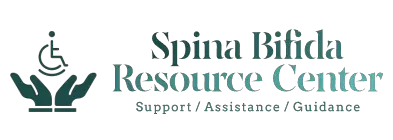Spina bifida (SB) is a neural tube defect that affects the baby during intra uterine life. There are several risk factors which are thought to cause SB. Many treatment options are available for treating SB. Its treatment depends upon two things: the severity of the birth defect and parents’ choice.
Medication during Pregnancy
The major cause of SB development in the unborn baby is thought to be the insufficiency of folic acid (vitamin B9) in the mother’s blood [1]. It is advised that a pregnant woman or one who is going to plan pregnancy should include folic acid supplements in her diet to avoid development of SB in the fetus (an unborn baby that is in the womb of pregnant lady and achieving its developmental stages).

If a fetus has already developed SB, it is still recommended for the mother to start taking folic acid supplements during her pregnancy to avoid the development of complicated type of SB or the progression of SB. The other part of management of SB in the intrauterine period is by surgery. The surgical option is not without risk for both mother and fetus as there is a chance of abortion. So, the option of surgery to repair a defect in the baby during pregnancy is totally up to the mothers’ will.
Medication for SB after Birth
If a child is born with SB, the medications for SB depend upon the severity and complications which are developed due to SB. If there is no evident physical abnormality present in the child, no treatment is required. It should be left untreated because drug treatment options may have some additional risks.
Medications can be given if a child presents with any complaint due to SB. Surgery to repair SB can be performed within the 48 hours of birth of baby. In this surgery, the spinal defect is repaired. Spinal nerves are separated and the spinal cord is placed in its proper place within spinal canal. If a baby with SB has developed hydrocephalus, then hydrocephalus must be corrected. Hydrocephalus is corrected by placing a shunt from a cranial cavity to the abdominal cavity to drain excessive CSF from brain to the body cavity.
As the child grows up, the severity of SB may increase, leading to the development of complications in the affected child. The most common complications are bowl, bladder and movement disorders. The medications are given below according to the need of person with SB.
Treatment for Urinary Bladder Disorders
The child with SB may presents with urinary incontinence. Treating such problems is helpful for the child to gain self confidence. The problems related to urinary system in the child with SB should be assessed by the urologist (a specified person who deals with the problems associated with the urinary tract system) to manage them in a proper way. The most common treatments for treating urinary tract system related problems are given below:
Clean Intermittent Catheterization: It is a technique in which the urinary bladder is emptied by passing a catheter to the urinary bladder through the urethra at regular intervals [2]. A special catheter is used for this purpose called Foley’s catheter. It is a very delicate, small, lubricated and flexible tube that can be passed easily through the urethra. Through this procedure, urine flows out from urinary bladder to a toilet. In the start, this is little bit tough, irritating and painful. But with the passage of time, these discomforts subside. The placement time interval for catheterization depends upon the patient’s habit and need. Some children only do catheterization once daily and some children do up to six times in a day.
Antimuscranics: These drugs are used to treat the muscles of the urinary bladder as they enhance the capacity of bladder to hold urine for a long time period [2]. So, the frequency to go to toilet is decreased. These drugs have many side effects i.e. dryness of mouth, constipation, blurring of the vision and sleepiness.
Alpha Receptor Antagonists: These drugs are used to control urinary incontinence as they affect on the muscles of sphincter urethra and control the flow of urine.
Surgical Treatments: Some small surgical procedures may need to be carried out to control urinary incontinence. These procedures are given below:
- Botulism Toxin – it is injected to paralyze the muscles of urinary bladder to control the incontinence. It has an effect of up to six months. After six months, it should be repeated to gain effect.
- Artificial urinary sphincter (AUS) – it is a specialized silicone cuff that is surrounded by fluid, pump and balloon. The fluid that is present around the cuff applies pressure on the urethra to shut. In this way, urine remains in the urinary bladder.
- Mitrofanoff procedure – it is a special surgical procedure in which the appendix is removed and a channel is produced between the urinary bladder and the belly button by using the appendix to drain the urine from urinary bladder.
Treatment for Bowl Disorders
The patients with SB may also face problems with their bowels. Bowel incontinence is most commonly associated with SB. For the treatment purpose of bowl incontinence, dietary changes or toilet training techniques are applied. Some frequently used treatments for bowel incontinence are given below:
Rectum irrigation: in this procedure, a catheter attached with a balloon is inserted into the rectum. The balloon is inflated and water is pushed in through the catheter to wash the bowel. Then balloon is deflated and contents of bowl along with catheter and water are washed out in the toilet.
Antegrade Continence Enema: it is a small surgical procedure in which appendix is used to make a channel between bowel and abdomen. A stoma is made on the surface of abdominal wall. A catheter is passed through this channel to wash the bowel.
Physiotherapy
Physiotherapy is helpful for the patient with SB to improve the function of leg muscles. It helps movements and independent mobility to save the leg muscles from weakness.
References
1. Czeizel AE, Dudas I, Vereczkey A, Banhidy F. Folate Deficiency and Folic Acid Supplementation: The Prevention of Neural-Tube Defects and Congenital Heart Defects. Nutrients 2013;5(11):4760-75.
2. De Jong TPVM, Chrzan R, Klijn AJ, Dik P. Treatment of the neurogenic bladder in spina bifida. Pediatr Nephrol 2008; 23(6): 889–96.


